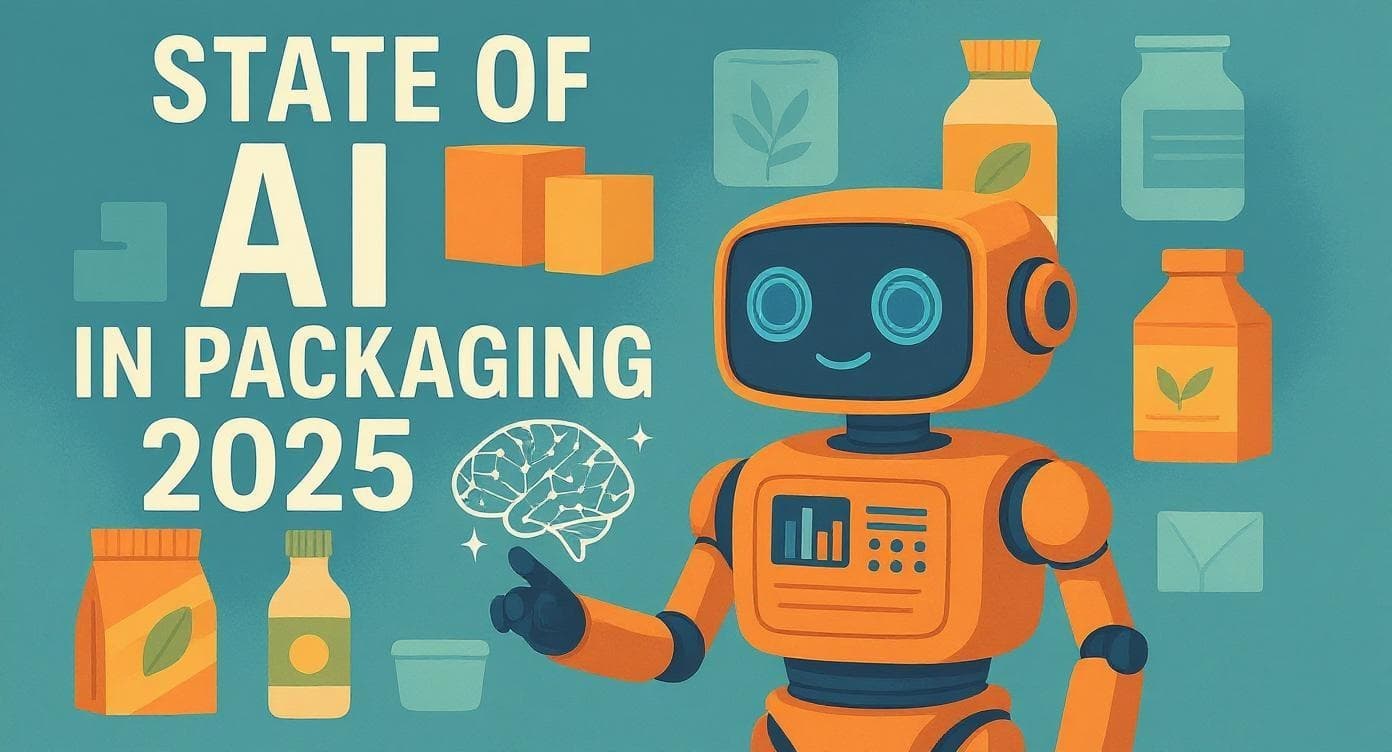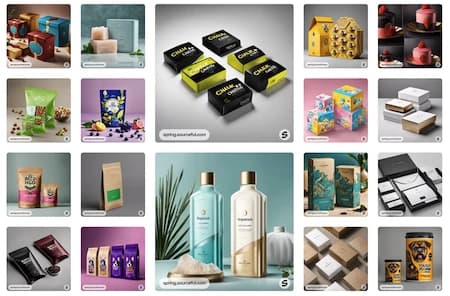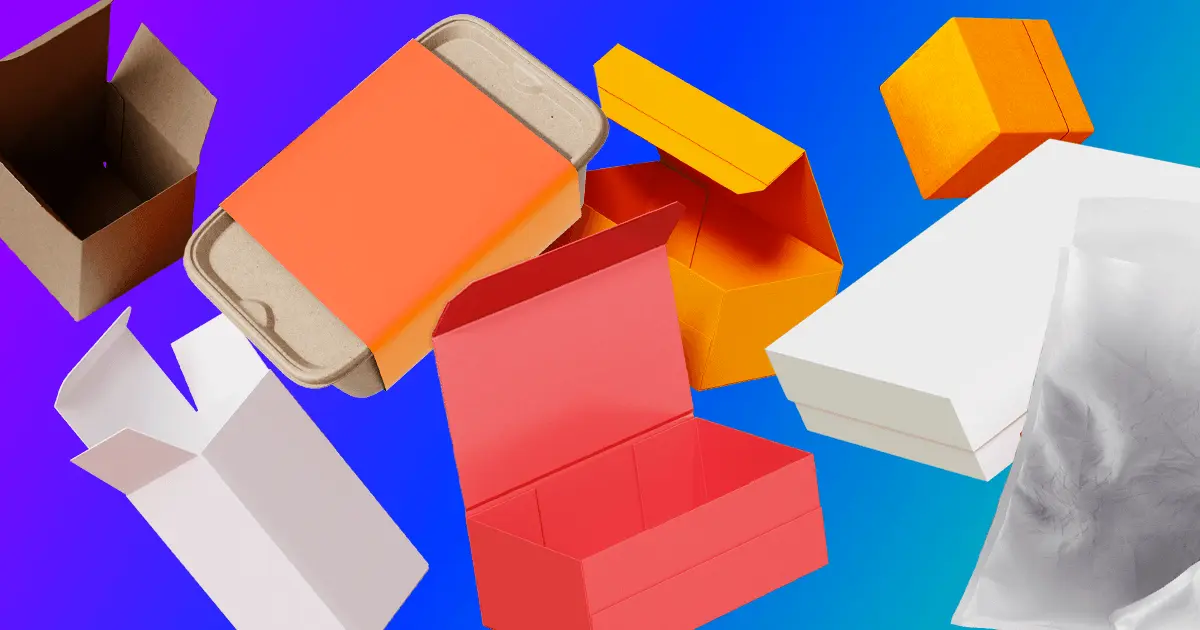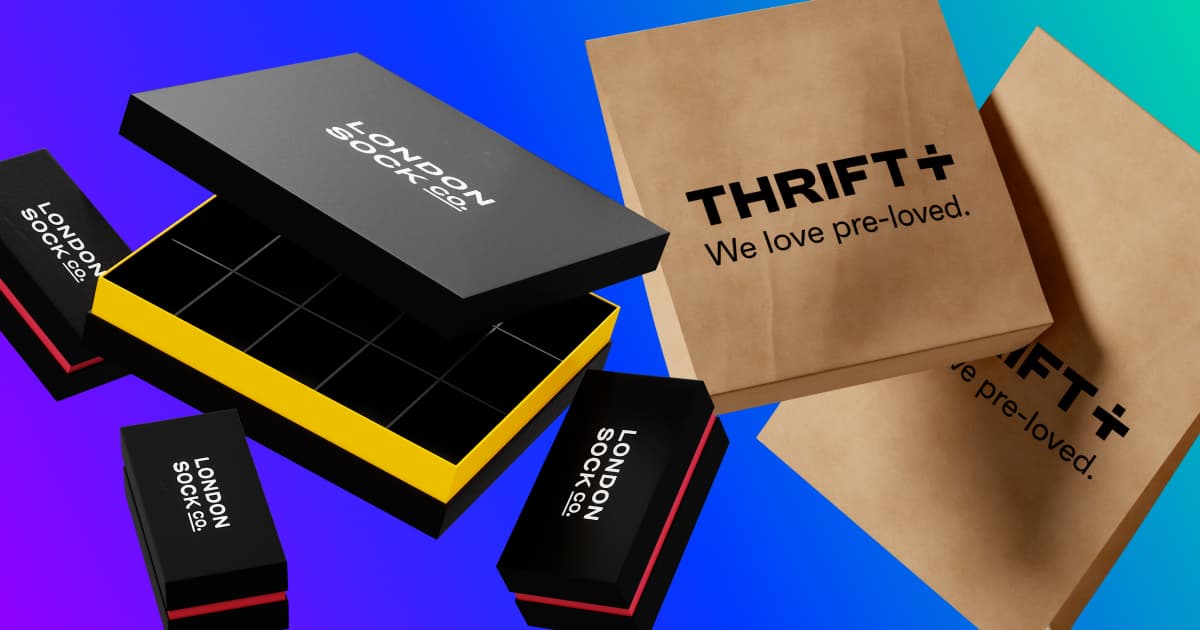Blog PostHow to get ahead: from packaging trends to packaging audits
- Innovation
- Technology
- Sustainability
- Design
Mattia Dell'OvaJanuary 9, 2024 - 7 min read
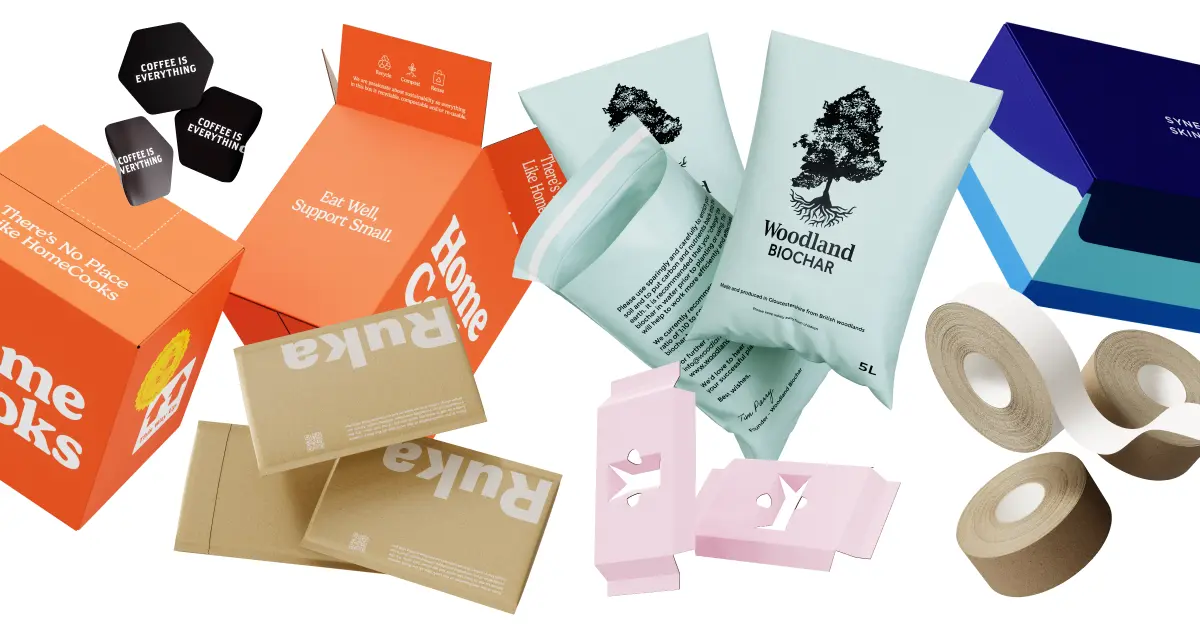
In the world of packaging, January to March is the perfect time to get ahead and put your brand in the best position. As the saying goes, the early bird catches the worm.
Why? Well, for most businesses (especially e-commerce brands), from January until March is the quietest time of the year. Which means a rare opportunity to get your packaging ready for the following months when demand soars, priorities pivot and business starts to heat up.
Once that happens, it’s much harder to make time for your packaging, even though your customers care about it — a lot. In fact, 72% of consumers say that a product’s packaging affects their purchasing decision. In other words, getting your packaging right is vital, and the earlier you can do that, the more competitive you will be for the year ahead. It’ll also mean less stress, fewer surprises, lower costs and a smoother day-to-day for your business.
Here’s the ultimate guide to getting ahead for the packaging year.
Tune in to packaging trends
Packaging trends are always appearing, changing and surprising, but now’s the time to look back at all of the predictions from last year about this year, and then use them to inform your packaging and your process. Here are our top three packaging trends and predictions for 2024.
1. Superior sustainability
Back in October of last year, we published Solving the Packaging Puzzle, a comprehensive study on the latest packaging trends across the industry, with insights from over 280 businesses.
One indisputable trend: sustainability is a top priority. So much so that it’s the number one priority for nearly half of all brands. And if it’s a priority for other brands, you should at least consider it. Ignoring what others are doing in competitive markets could mean ending up behind the curve.
What you can do this year: if you’ve already thought about making your packaging more sustainable, great news — you’re on the right track. If you haven’t, don’t worry — now’s the time to act. You can use our packaging audit checklist below to get started, or you can chat with one of our experts to find out the best direction for your packaging.
2. Paper power
Choosing paper-based packaging this year is one of the best ways to make your packaging more sustainable. And brands are flocking to make the switch, especially away from plastic.
This is because paper is one of the easiest materials to recycle, and recycling is one of the easiest ways for consumers to take climate action. So as consumers look for ways to make a difference, paper-based packaging is at the top of their list. It’s also one of the easiest switches for your brand to make, meaning that meeting the soaring demand for sustainable packaging is, well, easy.
Another reason is that other materials that, until recently, appeared to be sustainable are now being found to be not so sustainable. The best example of this is compostable packaging, which many brands pedalled as the next green bullet.
But after a study from our sustainability team, we found that compostable bags emit a whopping 1.5-2x more greenhouse gas emissions than virgin fossil plastic bags. Paper-based packaging, however, has consistently proven to be one of the most sustainable options.
What you can do this year: switch to paper-based packaging where possible. Switching materials shouldn’t compromise the function of your packaging, but today many paper-based materials offer identical performance to their less sustainable counterparts.
Glassine inner bags, for example, are the leading plastic-free alternative to the plastic poly bags common in the fashion industry. They’re made from durable, FSC-certified paper, and come with all the bells and whistles you’d want from an inner bag, including custom printing. And with that simple switch alone, you could reduce your carbon footprint by up to 24%.
More popular paper-based packaging: expandable paper mailer bags, custom shipping boxes, folding carton product boxes
3. Supply chain revolution
AI is changing our world in dramatic ways, from art and medicine to everyday tasks. Your supply chain is no exception. In fact, 71% of company leaders say they’re now investing in tech solutions (including AI) to improve their packaging operations. And 47% predict that AI will radically improve demand planning, especially for promotional events and peak trading periods to improve profitability.
Mostly this is because companies spend a frightening amount of time managing suppliers. Startups, for example, spend 39% of their time managing suppliers. For medium-sized businesses, it’s 33%. And for large companies, it’s a colossal 52%. Perhaps most telling is that over the next 12 months, 55% of all companies say they will use technology to strengthen and streamline their supplier relationships and optimise their supply chain for a more efficient future.
As technology and AI continue to prove that they can make our lives faster and easier, brands are adopting more of it to improve profitability, overcome operational hurdles and stay ahead of the competition. Our recommendation? Don’t miss the boat.
What you can do this year: talk to your packaging supplier about how they can help you move faster using AI and technology. There are usually opportunities to automate areas like inventory management and replenishment. Others may already be using AI to make designing and visualising your packaging faster, like we are at Sourceful. If your supplier can’t offer anything to help you ride the next supply chain wave — it may be time to look elsewhere.

Complete a packaging audit
A packaging audit is a comprehensive evaluation of your current packaging. The aim: find out what’s working and what’s not. Then — fix what’s not working. On a practical level, a packaging audit includes a deep dive into everything related to your packaging, from your complete costs to your materials, packaging designs and your end-to-end process, including returns.
Why should you do a packaging audit?
Think of a packaging audit as a strategic investment. Dramatically lower costs, a smaller environmental impact, better operational efficiency, more resilience and a brighter brand image are all the result of a well-conducted packaging audit. If done correctly, your audit will also act as a roadmap for future improvements or maybe even new packaging.
When should you do a packaging audit?
Fortunately, there’s no one time to do a packaging audit. Any packaging audit is better than no packaging audit. That said, there are a few ways to plan when to do your audit, depending on your business and industry:
1. Before peak season: if your business has a peak season, it's a good idea to do a packaging audit way before it starts. This will allow you to identify and fix any issues before demand picks up and packaging understandably takes a back seat. The hard truth is that if there are any weak spots in your packaging, peak season can be a painful reminder of them.
Tip: we recommend doing your packaging audit at least 3 months before your peak season. This will give you enough time to consolidate and share insights, make recommendations and put them into action.
2. After a major milestone: if you've recently launched a new product, changed suppliers, or gone through any other major change, it's a good time to conduct an audit and make sure that your packaging is in step with your business.
3. At the start of the year: conducting an audit at the start of the new year (calendar or fiscal) can help you set benchmarks and goals for the coming year, especially when it comes to budget planning. So if reducing packaging costs is a top priority, the new year may be the time for your audit.
4. Regularly: no matter the time of year, a regular packaging audit (quarterly, bi-annually, or annually) will give you a consistent overview of your packaging and supply chain. The more regular your audits, the better you’ll understand your packaging. In turn, you’ll be in the best position to constantly improve, optimise and streamline.
Tip: regular packaging audits are best, but they do take time and resources. If you’re a larger business, this may not be a problem. But if you’re just starting out, we recommend an annual packaging audit. Need help? Contact us
Your packaging audit: a checklist
Whilst there’s no golden formula for a packaging audit, there are a few questions that every audit should ask:
Packaging
- Is your packaging aligned with your brand?
- Does your packaging appeal to your customers?
- If yes, how do you know?
- Is your packaging accessible to all of your customers?
- Is your packaging functional?
- Does your packaging effectively protect your product in transit?
- Is your packaging easy to handle and store?
- Are your packaging materials cost-effective?
- How sustainable are they?
- Are they responsibly sourced?
- Are they certified?
- Is your packaging recyclable?
- Is your packaging compliant with all current regulations (e.g. environmental, labelling, content)?
Process
- Is your packaging process efficient?
- If not, what’s making it inefficient?
- How sustainable is your packaging process?
- How many packaging suppliers do you have?
- Is your packaging optimised for shipping (size and weight)?
- Is there a system for managing packaging waste?
- Do you actively encourage customers to recycle or return your packaging?
- Do you provide the right information to recycle or return?
Innovation
- Are you exploring ways to reduce your packaging waste?
- Are you exploring new packaging solutions?
- Are you collecting customer feedback on your packaging?
A list like this can seem daunting, but they’re crucial questions to ask if you want to get to the bottom of what’s working and what’s not.
Once you’ve asked the right questions, the next step is taking action. And the easiest way to take action is to work with a full-service packaging supplier. This means the supplier won’t just offer packaging, but other services too like warehousing, sustainability and even design. This will mean no stone is left unturned, and you can action all of your improvements from one place, instead of managing possibly hundreds of improvements across multiple suppliers.

Find packaging inspiration
Inspiration for new packaging is hard to come by at the best of times. During the January Blues, it’s even harder.
Luckily though — and with the help of AI — you don’t have to wait for packaging inspiration like you used to. Instead, you can use Spring, the world’s first AI packaging design tool made by Sourceful. It’s also completely free.
Spring uses generative AI to create unique packaging designs, tailored to your brand and needs, in just a few minutes. Since we launched Spring last August, brands from every industry have generated over 40,000 images and each saved on average 126 hours compared to creating the same designs in real life.
Since we launched Spring last August, brands from every industry have generated over 40,000 images and each saved on average 126 hours compared to creating the same designs in real life
If you’re wondering what you have to do, here’s how to use Spring in three easy steps:
- Go to spring.sourceful.com
- Fill in the short form about your brand, product and needs,
- Click Submit, and wait for unique packaging inspiration to land in your inbox — that’s it.
So whilst finding the perfect idea for your next packaging project used to be a long (and expensive) process, now it’s easy. Goodbye January Blues. Hello packaging inspiration.

Restock
Whilst you’ll inevitably replenish inventory throughout the year, now is a prime opportunity for two main reasons:
1. It’s not peak season: for most industries, January until March is a quiet time. Which makes it the perfect time to restock before key e-commerce dates like Valentines Day, Easter, Amazon Prime Day and others come around. If you are a business that caters for any of these dates, we recommend ordering your packaging at least ___ months in advance. A bonus of restocking during this period is that it’s likely you won’t have the immediate pressure of large orders coming in. In other words, it’s less stressful for you.
2. Inventory may be low: after the busiest time of the year (November to December), packaging is usually running low. Now’s the time to replenish the empty shelves and avoid stockouts, missed sales and unhappy customers further down the line.

Look ahead to key dates
January is all about looking ahead in the packaging industry — and for good reason.
First, knowing what’s on the horizon will allow you to prepare efficiently. This may mean designing new seasonal packaging or ordering your usual packaging for Valentine’s Day. Either way, giving yourself enough time to plan, design, produce and ship your packaging will help you avoid setbacks and countless stressful evenings.
Tip: If you need new packaging ahead of a key date, we recommend ordering at least 2 months in advance. If you need something bespoke, or you’re designing packaging from the ground up, we recommend leaving at least 3 months before a key date
Second, having a complete overview of the year ahead minimises the risk of missing dates that your customers care about. And in the relentless buzz of business, missing such dates is easier than you think. If you do, it’s likely you’ll end up with disgruntled fans and ultimately lost future revenue.
To help you see the road ahead for this year, we’ve listed a few key dates that matter to brands across e-commerce and retail. Put them in your calendar and then use the “when to order” information to plan your packaging.
- January: Veganuary
- January 1st: New Year’s Day
- January 15th: Blue Monday
- January 25th: Burns Night
When to order: 2 months in advance (November)
- February: LGBT History Month
- February 10th: China Lunar New Year
- February 13th: Galentine’s Day
- February 13th: Pancake Day
- February 14th: Valentine’s Day
- February 20th: Love Your Pet Day
When to order: 2 months in advance (December)
- March 7th: World Book Day
- March 8th – International Women’s Day
- March 10th – Mother’s Day (UK)
- March 29th - Good Friday
- March 31st - Easter Sunday
When to order: 2 months in advance (January)
- April: National Pet Month
- April 1st - Easter Monday
- April 1st – April Fool’s Day
- April 11th – National Pet Day
When to order: 2 months in advance (February)
- May 4th – Star Wars Day
- May 11th – Eurovision Final
- May 12th – Mother's Day (non-UK)
- May 13th – World Cocktail Day
When to order: 2 months in advance (March)
- June: Pride Month
- June 8th – World Gin Day
- June 16th – Father’s Day
- June 29th - London Pride
When to order: 2 months in advance (April)
- July 7th – World Chocolate Day
When to order: 2 months in advance (May)
- August 2nd – International Beer Day
- August 8th – International Cat Day
- August 9th – Book Lovers Day
- August 22nd – National Burger Day
- August 26th – National Dog Day
When to order: 2 months in advance (June)
- September 6th – Read a Book Day
- September 22nd – Autumn begins
When to order: 2 months in advance (July)
- October: Black History Month, Stoptober
- October 1st – International Coffee Day, World Vegetarian Day
- October 22nd – National Nut Day
- October 25th – World Pasta Day
- October 29th – National Cat Day
- October 31st – Halloween
When to order: 2 months in advance (August)
- November: Black Friday sales, Movember
- November 1st – World Vegan Day
- November 29th – Black Friday
- November 30th – Small Business Saturday
When to order: 3 months in advance for Black Friday (August)/2 months in advance for other dates (September)
- December 2nd – Cyber Monday
- December 4th – National Cookie Day
- December 25th – Christmas Day
- December 31st – New Year’s Eve
When to order: 2-3 months in advance (October/November)
New year, new packaging
Now is the golden opportunity for your brand to review, plan and get your packaging ahead of the competition. Sure, you could do it later, but the famous January to March period is your secret weapon and the perfect time to make your level up your packaging without some of the pressures of normal business life.
As we like to say: get ahead, stay ahead.



